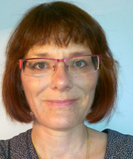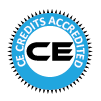
Dr.Ruth Nebel
Researcher, Berlin, Germany
Title: Maxilla’s Occlusal Plane –Tool for Orientation in Space? A new Aspect concerning Temporomandibular Dysfunction (TMD
Biography
Biography: Dr.Ruth Nebel
Abstract
A connection between teeth and body posture has been assumed ever since. While occlusion all in all has not shown a connection to body posture, craniofacial heights do provide this. This suggests a relation to an external goal and raises the question, whether the upper occlusal plane is positioned to space rather than to the body. This would even concern man’s orientation to space. rnrnWhile an EbM/EbD- investigation has been lacking in the theme, video recordings with exact focus were used. The position of the upper occlusal plane is shown with a marking cross fixed to upper teeth. It then has been adjusted to the true horizontal and the movement direction.rnrnProvisional ResultsrnIn walking, running and jumpingrn- the marking cross stays spatially constantrn- wafers of asymmetrical thickness affect an asymmetric body posture and uneven motion. The marking cross stays spatially constant meanwhile.rn- The interpupillary line is spinning around the marking cross.rnrnProvisionally is concluded, that teeth seem to be connected to posture via the position of the occlusal plane to the skull. Maxilla and the upper occlusal plane seem to image the spatial dimensions. Changes in teeth length, even iatrogenic (!), will turn body posture and movements asymmetrically: Shear forces by torsions and a non-axial loading will damage the body’s structures. This seems to be the pathomechanism for pain in TMD.rnrnIntegrating the spatial function of teeth in dentistry may prevent and cure TMD. Therefore, a spatial articulator is recommended. rn

